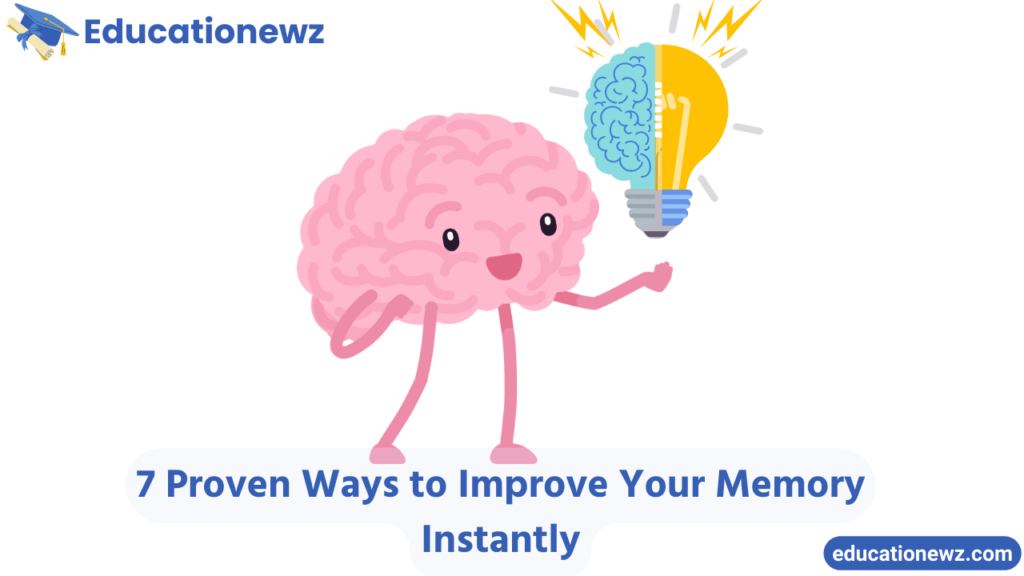Flash cards are a powerful tool for mastering new concepts, memorizing facts, and improving retention. Whether you’re preparing for exams, learning a new language, or building your knowledge base, creating and using flash cards effectively can make a huge difference. In this article, we will explore 15 better ways to make and study flash cards, ensuring you get the maximum benefit from this timeless learning strategy.
Why Use Flash Cards for Learning?
Flash cards are versatile and allow for active recall, which is a scientifically proven technique to strengthen memory. By consistently practicing with flash cards, learners can enhance their focus, understanding, and long-term retention. Plus, they’re portable, customizable, and ideal for breaking down complex information into manageable chunks.
1. Start with Clear Goals

Before diving into creating flash cards, identify your objectives. Ask yourself: What do I want to learn? Are you preparing for a biology exam, learning vocabulary, or mastering historical dates? Setting clear goals ensures your flash cards are focused and relevant. Avoid overloading your cards with unnecessary information; instead, focus on concise yet meaningful content that directly supports your goals.
Key Tips:
- Write down your learning objectives.
- Keep topics specific, such as “cell division stages” or “Spanish irregular verbs.”
- Prioritize essential information to make studying efficient.
2. Use High-Quality Materials
The physical quality of your flash cards can influence your learning experience. Invest in durable cards or digital tools to ensure your study resources last. Using colorful pens, markers, or highlighters adds a visual dimension, making it easier to categorize and remember information.
Table: Recommended Flash Card Tools
| Material Type | Description | Best For |
|---|---|---|
| Index Cards | Thick, durable paper cards | Traditional learners |
| Digital Flash Cards | Apps like Quizlet or Anki | On-the-go and tech-savvy users |
| Colored Markers | Visual emphasis for categories | Creative learners |
| Laminated Cards | Waterproof and long-lasting | Outdoor or rugged use |
3. Prioritize Simplicity
Each flash card should focus on one idea or concept. Crowding a card with too much information can overwhelm your memory. Simplicity ensures you’re able to grasp the key points quickly.
Examples of Simplified Cards:
- Front: “Capital of France”
- Back: “Paris”
- Front: “Formula for Speed”
- Back: “Distance ÷ Time”
By maintaining simplicity, you enhance active recall and reduce unnecessary distractions.
4. Write Questions, Not Statements
Framing your flash cards as questions encourages active recall. Instead of stating facts, turn them into questions that challenge your brain to retrieve the answer.
Examples:
- Instead of: “Photosynthesis converts light into energy,” write: “What does photosynthesis convert?”
- Instead of: “Einstein’s theory of relativity,” write: “Who proposed the theory of relativity?”
By actively engaging with your flash cards, you’ll strengthen your memory.
5. Incorporate Images and Diagrams
Visual elements can make flash cards more engaging and easier to remember. Include images, symbols, or diagrams whenever possible, especially for subjects like biology, geography, or anatomy.
Example:
- Front: A diagram of the human heart.
- Back: Labels for each part (e.g., ventricles, atrium).
Visual learners will find this approach especially helpful in grasping complex concepts.
6. Leverage Color Coding
Color coding is a simple yet effective way to organize your flash cards. Assign different colors to categories or topics to quickly identify and sort through them.
Tips for Color Coding:
- Use green for definitions, blue for formulas, and red for key dates.
- Highlight keywords or main concepts with bright markers.
- Stick to a consistent color scheme to avoid confusion.
7. Break Down Complex Information
Large concepts can be overwhelming on a single flash card. Break them down into smaller, digestible pieces. For example, if you’re studying the periodic table, create separate cards for each element with details like atomic number, symbol, and characteristics.
Example:
Instead of:
- Front: “Periodic Table”
- Back: “Elements, atomic numbers, symbols.”
Break it into:
- Front: “Atomic number of Oxygen?”
- Back: “8”
- Front: “Symbol for Sodium?”
- Back: “Na”
8. Regularly Shuffle Your Cards

Flashcards are a fantastic tool for learning, but using them in the same order every time can lead to rote memorization rather than true understanding. To keep your brain engaged and ensure you’re mastering the content, not just the order, try these tips:
Embrace the Element of Surprise
Shuffling your flashcards regularly introduces an element of surprise, keeping your brain on its toes. This unpredictability forces your mind to recall information based on the content itself, rather than its position in the sequence.
Mix Up Your Study Sessions
Don’t just shuffle your cards—shuffle your study sessions too! Combine different subjects or topics in one session to create a more dynamic learning experience. This approach, known as interleaving, can enhance your ability to differentiate and apply concepts in various contexts.
Use Different Shuffling Techniques
- Random Shuffle: Simply mix up the cards randomly before each study session.
- Thematic Shuffle: Group cards by themes or categories and shuffle within those groups to focus on specific areas while still introducing variety.
- Reverse Order: Occasionally study the cards in reverse order to challenge your recall from a different perspective.
Incorporate Technology
Leverage digital flashcard apps that offer automatic shuffling and spaced repetition algorithms. These tools can help you review cards at optimal intervals, reinforcing your memory and understanding over time.
Gamify Your Learning
Turn shuffling into a game! Challenge yourself to see how quickly you can go through a shuffled deck without making mistakes. Reward yourself for achieving milestones to keep motivation high.
Reflect on Your Progress
After each study session, take a moment to reflect on which cards were the most challenging. This self-assessment can guide your focus for future sessions, ensuring you’re continually improving and mastering the material.
By regularly shuffling your flashcards and incorporating these strategies, you’ll transform your study routine into a more engaging and effective learning experience. Embrace the challenge, and watch your understanding and retention soar!
9. Use Active Recall and Spaced Repetition
Active recall and spaced repetition are proven methods to maximize retention. After reviewing a flash card, test yourself repeatedly at increasing intervals.
Tips:
- Review cards daily for the first week.
- Gradually extend intervals to weekly or bi-weekly reviews.
- Use apps like Anki to automate spaced repetition schedules.
10. Create Personalized Mnemonics
Mnemonics are memory aids that simplify learning by creating associations. Adding mnemonics to your flash cards makes it easier to recall challenging concepts.
Example:
- Front: “Order of Planets?”
- Back: “My Very Educated Mother Just Served Us Nachos” (Mercury, Venus, Earth, Mars, Jupiter, Saturn, Uranus, Neptune)
11. Test Yourself with Peers
Studying with friends or peers using flashcards can make learning more interactive and enjoyable. Here’s how to make the most of it:
- Interactive Quizzing: Take turns quizzing each other to reinforce understanding and discover gaps in knowledge. This collaborative approach can make studying feel less like a chore and more like a fun challenge.
- Group Discussions: Engage in discussions about the flashcard topics. Explaining concepts to others can deepen your understanding and reveal areas that need more attention.
- Friendly Competitions: Turn your study sessions into friendly competitions. See who can answer the most questions correctly or who can explain a concept the best. This adds a playful element to learning.
12. Add Real-World Examples
Linking concepts to real-world scenarios adds context and makes learning more relatable and memorable:
- Current Events: Tie theories to current market trends or recent news. For example, if you’re studying economics, discuss how recent economic policies are impacting the market.
- Personal Experiences: Relate the material to your own experiences or those of people you know. This personal connection can make the information more meaningful.
- Case Studies: Use case studies or real-life examples to illustrate complex concepts. This can help you see how theoretical knowledge is applied in practical situations.
13. Focus on Problem Areas
Identify and prioritize areas where you struggle to ensure a well-rounded understanding:
- Self-Assessment: Regularly assess your knowledge to identify weak points. Use quizzes, practice tests, or self-reflection to pinpoint areas that need improvement.
- Targeted Practice: Create flashcards specifically for the topics you find challenging. Dedicate extra time to reviewing these cards until you feel more confident.
- Seek Help: Don’t hesitate to ask for help from teachers, tutors, or peers if you’re struggling with certain concepts. Sometimes a different perspective can make all the difference.
14. Incorporate Audio Elements
For auditory learners, incorporating audio elements can enhance retention and engagement:
- Record Yourself: Record yourself reading flashcards aloud and listen to the recordings during commutes or while doing chores. Hearing the information repeatedly can reinforce learning.
- Use Audio Apps: Utilize apps that offer audio features, such as text-to-speech or pre-recorded flashcards. These tools can provide a multi-sensory learning experience.
- Pair with Visuals: Combine audio with visual aids, such as diagrams or images, to engage multiple senses and reinforce memory.
15. Evaluate and Update Your Cards

Regularly reviewing and refining your flashcards ensures they stay accurate and relevant:
- Periodic Review: Set aside time each week to go through your flashcards. Remove cards you’ve mastered and add new ones to keep your study sessions fresh and challenging.
- Update Content: Ensure the information on your flashcards is up-to-date. Replace outdated facts or add new insights as you learn more about the subject.
- Customize for Clarity: Make sure your flashcards are clear and concise. If a card is too complex, break it down into simpler parts or add additional cards to cover the details.
By incorporating these strategies, you can make your study sessions more effective, engaging, and enjoyable. Happy studying!
FAQs About Flash Cards
How often should I use flash cards?
Daily for the first week, then at increasing intervals using spaced repetition.
Can digital flash cards replace physical ones?
Yes, but physical cards may be more effective for hands-on learners.
What is the best app for creating flash cards?
Popular apps include Quizlet, Anki, and Brainscape.
How many flash cards should I study at a time?
Limit sessions to 20-30 cards to avoid burnout.
Are flash cards effective for all subjects?
Yes, but they’re particularly effective for factual and conceptual learning.
By following these 15 strategies, you can optimize your use of flash cards and achieve your learning goals efficiently. Remember, the key lies in consistent practice, creativity, and personalization. Please follow our blog Educationewz.



